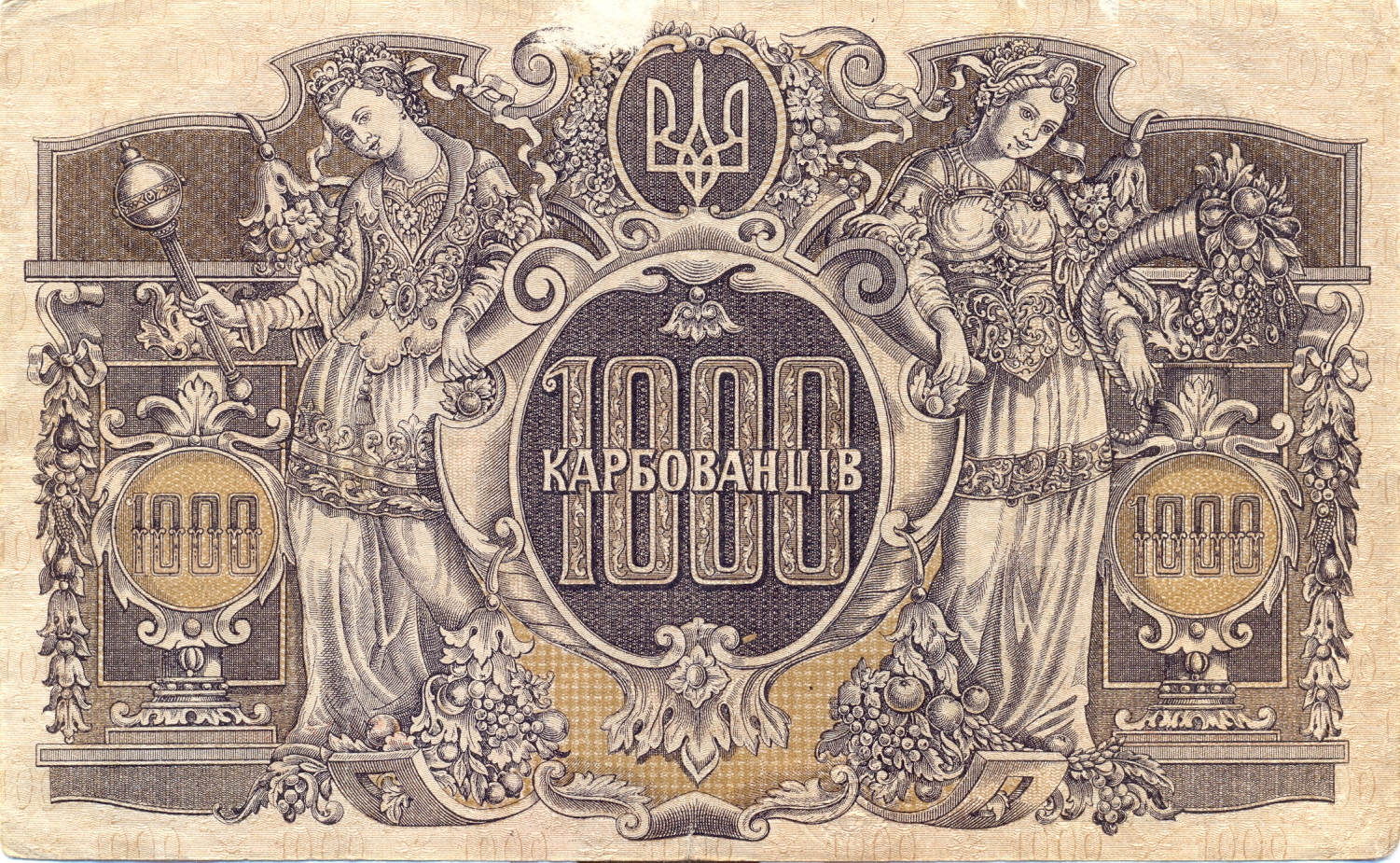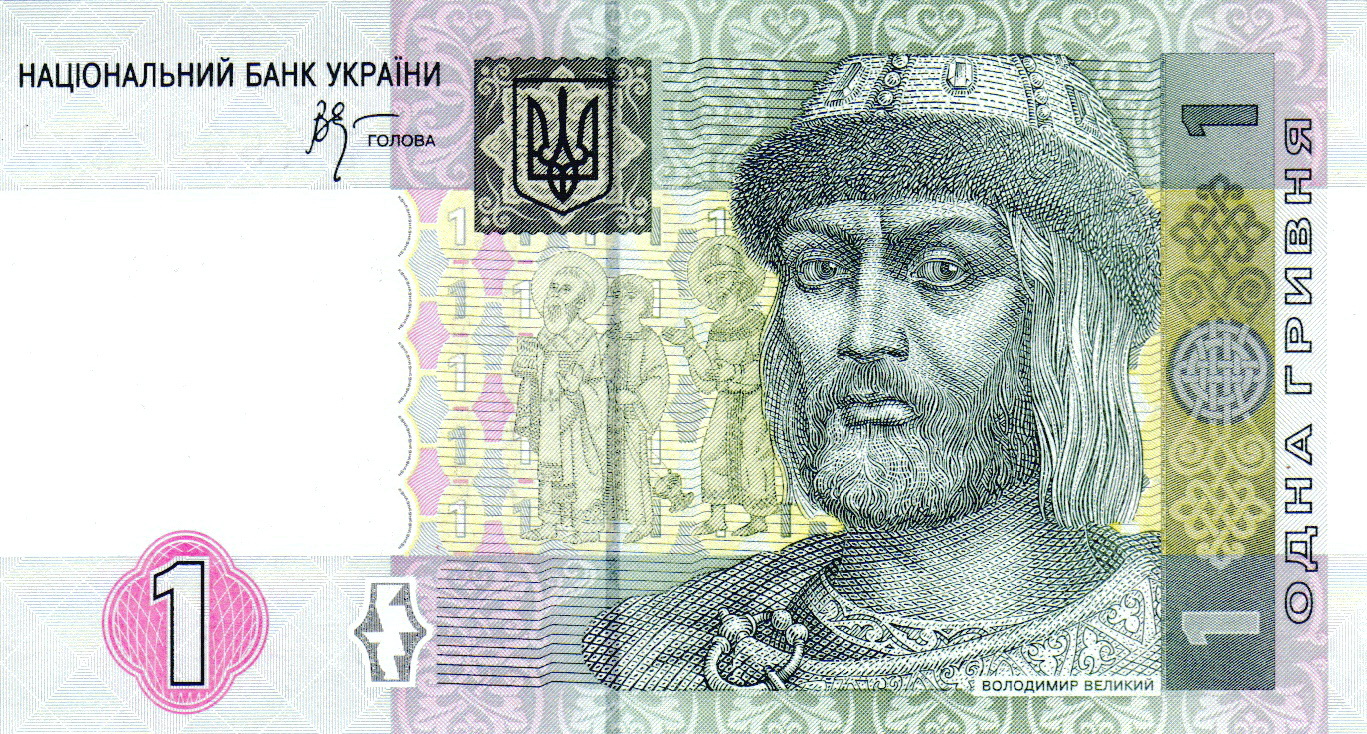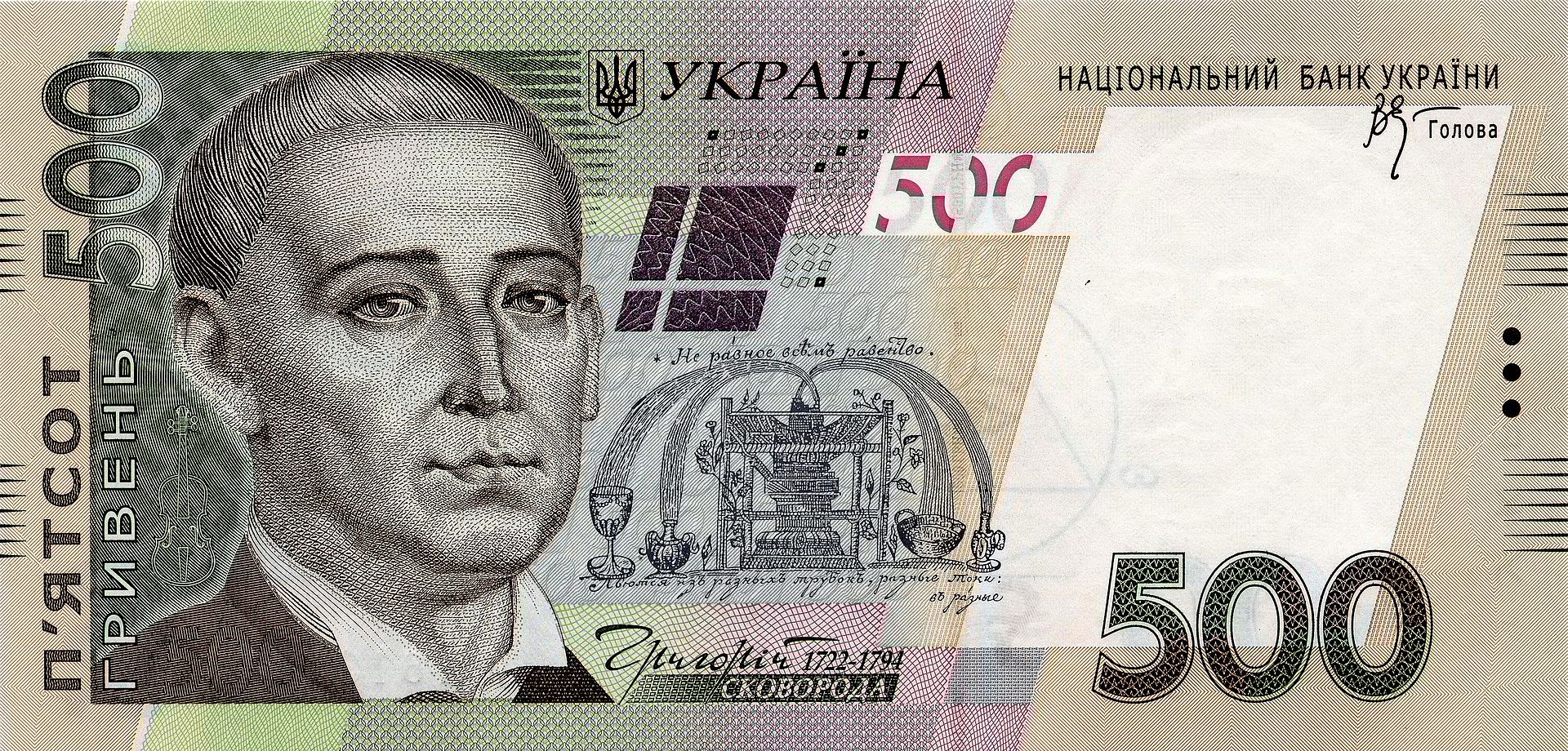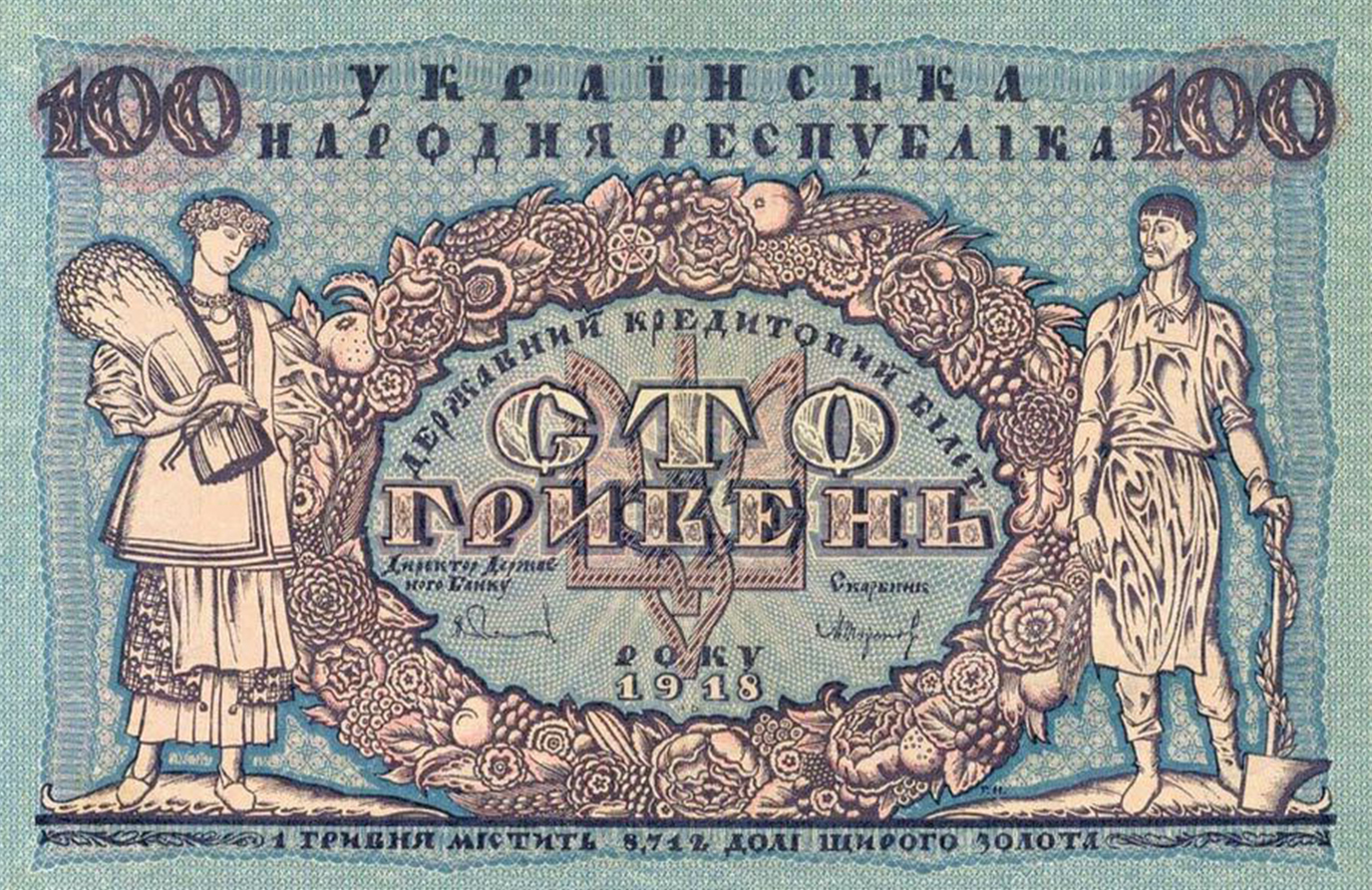The history of the Ukrainian national currency
The hryvnia is Ukraine’s official national currency. The name is derived from the word “hryvnia,” which in Kyiv Rus times meant a decoration worn at the nape of the neck.
As early as the 8th and 9th centuries, the hryvnia was used as a unit of weight and counting when trading and paying tributes. Later, in various historical periods, the word “hryvnia” acquired different meanings more than once.
Coin production in the 10th to 12th centuries
The first Ukrainian money, zlatnyks (gold coins) and sriblianyks (silver coins) were produced under Kyiv Prince Volodymyr the Great. These coins are the oldest extant documents that have an image of the trident, a symbol used by Kyiv princes.
The obverse of zlatnyks features the prince on a throne, a trident and the legend “ВЛАДИМИР НА СТОЛЕ” (Volodymyr on a throne). The reverse depicts the face of Jesus and the legend “А СЕ ЕГО ЗЛАТО” (and this is his gold).

Image description: Zlatnyk of Prince Volodymyr
This is an image of the zlatnyk, a gold coin minted during the reign of Prince Volodymyr the Great in the 10th century. It is one of the earliest coins minted in what is now Ukraine and serves as a key historical source. The obverse features the prince seated on a throne with a trident, an early dynastic emblem that later became Ukraine’s national coat of arms. The reverse shows the face of Jesus and the inscription “А СЕ ЕГО ЗЛАТО” (“And this is his gold”). The coin signifies the Christian heritage and early statehood of Kyivan Rus.
While the earliest coins produced by Western European countries copied Roman coins, including the portraits and legends placed on these coins, zlatnyks and sriblianyks only featured legends in the Old East Slavic language and bore images of Old Rus princes.

Image description: Sriblianyk with trident
This is a silver sriblianyk — an early medieval coin minted in the Kyivan Rus period. It features the portrait of a prince along with a trident, reflecting sovereign rule. Unlike Western European coins of the time, which borrowed Roman imagery, this coin bears only native Slavic legends and imagery. It underscores the independent monetary identity of Kyivan Rus. The coin is held in the Odessa Numismatic Museum.
Svyatopolk I of Kyiv (Svyatopolk the Accursed), Yaroslav the Wise and Oleg I of Chernihiv (Prince of Tmutarakan) also produced silver coins.
On the way toward an independent state
In the 12th to 14th centuries, Kyiv Rus weakened by feudal disunity, minted no coins. Silver ingots called hryvnias were mostly used as money in that period.

Image description: Silver hryvnia ingot
The image shows a silver ingot known as a hryvnia, used between the 11th and 14th centuries after coin minting had stopped. These ingots were typically elongated or rhomboid in shape and weighed approximately 160 grams. They served as a standardized medium for large transactions and tribute payments, helping maintain commerce in times without coinage.
After a long break, the middle of the 14th century saw a revival of coin circulation. Coins were also produced briefly, such as the Red Rus half-grosh in Lviv and sribniaks (silver coins) of Vladimir Olgerdovich in Kyiv. Hryvnias gradually ceased to circulate and were only known as units of counting.
At a later period, Hetman Bohdan Khmelnytskyi planned to revive coin mintage in Ukraine. As early as the beginning of the Cossack-Polish War of 1648-1654, the hetman sought to conduct an independent financial policy, which he believed to be an attribute of statehood. Little is known about whether the hetman ever put his plan into action, as the written records of the time have not yet been supported by any archeological evidence.
The Ukrainian Revolution of 1917 to 1921
During Ukraine’s struggle for independence from 1917 to 1921, the introduction of a national currency and the establishment of an independent banking system were of great importance in creating a sovereign Ukrainian state.
On 22 December 1917, the Central Council adopted a law declaring the Russian State Bank’s Kyiv branch Ukraine’s state bank. Mykhailo Kryvetskyi was appointed the first director of the bank. It was Kryvetskyi who signed the first banknote issued by the independent Ukrainian state – the 100 karbovanets banknote, which was put into circulation on 5 January 1918. One karbovanets was equivalent to 17.424 measures of pure gold, with one measure equaling 0.044 g of gold.
While designing the 100 karbovanets banknote, artist Heorhiy Narbut incorporated the trident into its design as the symbol that was found on the oldest Ukrainian coins – the zlatnyks and sriblianyks made by Volodymyr the Great.
On 1 March 1918, the Central Council passed a law that introduced a new unit of money, the hryvnia, which consisted of 100 shahs and equaled 1/2 of a karbovanets.
After coming to power in April 1918, Hetman Pavlo Skoropadsky reinstated the karbovanets, which consisted of 200 shahs, as the main unit of money of the Ukrainian State. Banknotes of 10, 25, 50, 100, 250 and 1,000 karbovanets were designed.

Image description: 100 karbovanets banknote (1918)
This image features the first official Ukrainian banknote — a 100 karbovanets note issued in January 1918. It was signed by Mykhailo Kryvetskyi, director of the newly established Ukrainian State Bank. The note was designed by Heorhiy Narbut and incorporates the trident — a national symbol derived from ancient zlatnyks. It marked a major step toward financial independence during the Ukrainian Revolution.
When the Directorate headed by Volodymyr Vynnychenko and Symon Petliura seized power in December 1918, it revived the Ukrainian People’s Republic and declared the hryvnia the main unit of money.
A total of 24 paper banknotes were issued into circulation between 1917 and 1921.
The bofons (receipts for donations to the military fund) issued by the Ukrainian People’s Republic
The continued struggle for Ukraine’s independence by the Organization of Ukrainian Nationalists and the Ukrainian Insurgent Army required constant assistance from the public. Bofons played the role of money in those days. Bofons were monetary instruments that were printed usually on one side, less often on two sides, of a piece of paper, and featured national symbols and the symbols of the Organization of Ukrainian Nationalists and the Ukrainian Insurgent Army.
Overall, about 500 bofon types were produced between 1939 and 1954. They circulated in at least 12 oblasts of Ukraine, in Belarus, as well as in parts of Austria, Germany, Poland, Slovakia, and the Czech Republic.
The most famous series of bofons, the Volyn series, was designed in 1945 and 1946 by Nil Khasevych, one of the most talented graphic artists of the 20th century.

Image description: UPA bofon
This image shows a “bofon,” a receipt-like monetary document used by the Ukrainian Insurgent Army (UPA) in the 1940s. This particular version is part of the “Volyn series” created by Nil Khasevych in 1945–1946. Printed on one side and featuring national and resistance symbolism, these documents helped raise funds and spread nationalist messages during Ukraine’s fight for independence from Soviet occupation.
The hryvnia is the national currency of independent Ukraine
Establishing its own currency became extremely important for independent Ukraine. As early as 10 January 1992, the NBU put reusable coupons into circulation. On 20 March 1991 the Law of Ukraine On Banks and Banking was adopted, which among other things, governed the use of coupon karbovanets.
For some time, coupon karbovanets circulated along with Soviet rubles. On 12 November 1992, Ukrainian karbovanets were declared the sole legal tender in Ukraine, both for cash and cashless transactions.
Between 2 and 16 September 1996, a currency reform was carried out in Ukraine that introduced the hryvnia as Ukraine’s national currency. The NBU issued 1, 2, 5, 10, 20, 50, 100 hryvnia banknotes into circulation.

Image description: 1-hryvnia banknote (2005)
This is a one-hryvnia banknote from 2005, representing one of the early modern notes following the introduction of the hryvnia in 1996. The front of the note features Prince Volodymyr the Great, tying modern currency to historical roots. The note includes several security features and symbolizes financial stability in the early 2000s.
Work to design the hryvnia started as early as 1992. The first banknotes, designed by artists Vasyl Lopata and Borys Maksymov, were printed in Canada and the UK.
Suggestions for the name of the coins included “sotyi” and “rezana,” but in the end preference was given to “kopiika.” The first kopiikas were produced at Luhansk Machine Tool Plant and at the Italian Mint. These were 1, 2, 5, 10, 25 and 50 kopiikas.
In 1994 Ukraine launched its own paper mill, while in April 1998 it founded its own mint. The NBU relies on state-of-the-art technologies for its hryvnia production. It has recently introduced a new technology for manufacturing banknotes from paper with embedded fibers of Ukrainian flex.

Image description: 500-hryvnia banknote (2006)
This 500-hryvnia note, first issued in 2006, features philosopher Hryhorii Skovoroda. It incorporates advanced security features, including transparent windows and UV elements. Notably, the paper used for this note contains Ukrainian flax, showcasing domestic production capabilities. The design reflects national pride and technical innovation in Ukrainian currency production.














